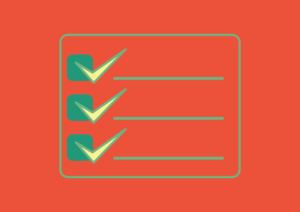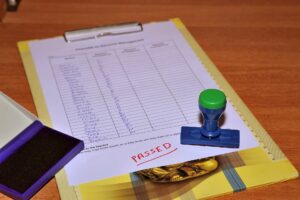The last post was on the concept of grade inflation in aikido and that it has led to overly high standards in non-japanese dojos. The big question though is whether or not there is a way to actually solve or at least alleviate the issue. I think there is and all it would require is a revamped grading system. There are a few ways that this could be done.
Just get rid of it
The first thing that we could do is abandon the grading system altogether. Return to a time when people simply trained for the sake of training. Before grading there was a system of teaching licences, menkyu. A revival of that system, which still exists, might serve the purposes better than the grading system. Kyu and dan grades are a relatively new thing in martial arts training, comparatively speaking anyway.
The problem with that is despite being quite modern the grading system is quite well entrenched and everybody uses it. Removing it would probably be more problematic than its worth.

Make it a real test
A different option exists though. Currently a grading is an opinion poll. Have you done well enough based on what the person watching you wants to see you do? That is the core of the issue. If there were standardised requirements that problem would evaporate. The most constructive thing that that I can think of is to formulate highly specific criteria for grading. Highly formalise the grading test with a marking system.
Making it work
For example, each student needs to accumulate 20 points to pass their grading. They are asked to perform 5 techniques, each is worth 5 points. There’s a total of 25 marks up for grabs and they need 20.
Each technique would have set criteria that must be demonstrated in order to obtain the marks. This criteria will obviously be different for each grade and each technique. For 5th kyu it would be incredibly basic stuff, such as did they actually perform the requested technique e.g. sankyo ura. In contrast at shodan it would be whether they released the lock at any point during the technique.
With a point scale established, all students across all the dojos would be graded on exactly the same criteria. Passing and failing no longer becomes an opinion poll but an actual test. They either met the criteria or they did not. Ambiguity vanishes overnight.
Personally I would make this a positive and negative marking system. Let’s say during a 5th kyu exam the student was doing shomen uchi sankyo omote. Unfortunately they did shomen uchi sankyo ura. They did the wrong technique so they lost a mark. If they also did it so that they never released the sankyo lock, which requires a high degree of skill, then they should gain marks for that. They’ve exceeded the standard that was expected (quite substantially in this example).
Improved feedback
This system would also allow for highly focused feedback. Both the student and the instructor can look at the results and immediately determine that they did very well on some things but clearly need to improve on others. It becomes very obvious how to individualise that students training to work on the areas that they are struggling with. This will help them learn faster and get over any plateaus that they may be experiencing.
It will also help the instructor identify any major underlying flaws. If a student is collapsing their arms in one technique chances are they’ll do it in them all. Loss of extension tends to be universal in a student. An exam graded as described would go a significant way to highlighting that problem.
If a federation were to adopt this system then every student in every dojo from that federation would be the same standard. Naturally there will be variation, the system I’ve proposed is built to account for it due to the marking system. Broadly though, the students will be at the same standard.
Some hard work required
The biggest issue with this is that would require a lot of work in the first place to set the system up. It would require those in charge of gradings to sit down with the grading syllabus and go through it defining, precisely, what is expected for each technique at each grade.
The only reason that is a problem is that the vast majority of aikidoka have never actually done that. They haven’t actually sat down and considered what they expect to see. They’ve never had to because they have a picture in their head of what a certain grade looks like.

Another concern is that some people would inevitably see a system like this as a competition. There are points, prizes and the option to fail. It’s not a competition though. No more than any current grading could be considered one anyway. It’s simply an adjustment to how the grade is determined to make it fairer and standardise the results.
There are other advantages to this though that would offset these pitfalls. It would remove a lot of the uncertainty from a grading. Students will know, in advance, exactly what is expected of them and whether or not they are ready to attempt to grade.
If there were any potential bias from instructors then this helps prevent it, both positive and negative, the system would become a little more honest. There’s always room for abuse but not so much anymore.
A clear path
There would be a clearly charted path from 6th kyu to shodan and beyond. Each grade builds on the previous one. The level of skill and knowledge needed to pass a higher grading exceeds what the previous one was. That’s just how it works. A student looking at the grading syllabus would now be able to see exactly what that path looks like and what they need to accomplish along the way. In these modern times that would likely go a long way to student retention.
The grading system that we currently have is incredibly vague and has permitted the occurrence of grade inflation. We should all seriously consider reworking it to remove these issues. The system described here could work but is definitely not the only one. In the near future I will be looking at my own federations grading list, and attempting to make the changes I’ve described above. Even if they are not adopted by the federation I can at least standardise my own students gradings.
If you can afford it, and would like to help out,
consider donating some brain fuel!
Also, if you enjoyed this post you can find further insights in this book.